What are sinkholes and what triggers them?
Sinkholes are appearing across Britain as rain batters the UK and floods continue to swamp some areas – but what are they, and is heavy rain really to blame for that sinking feeling?
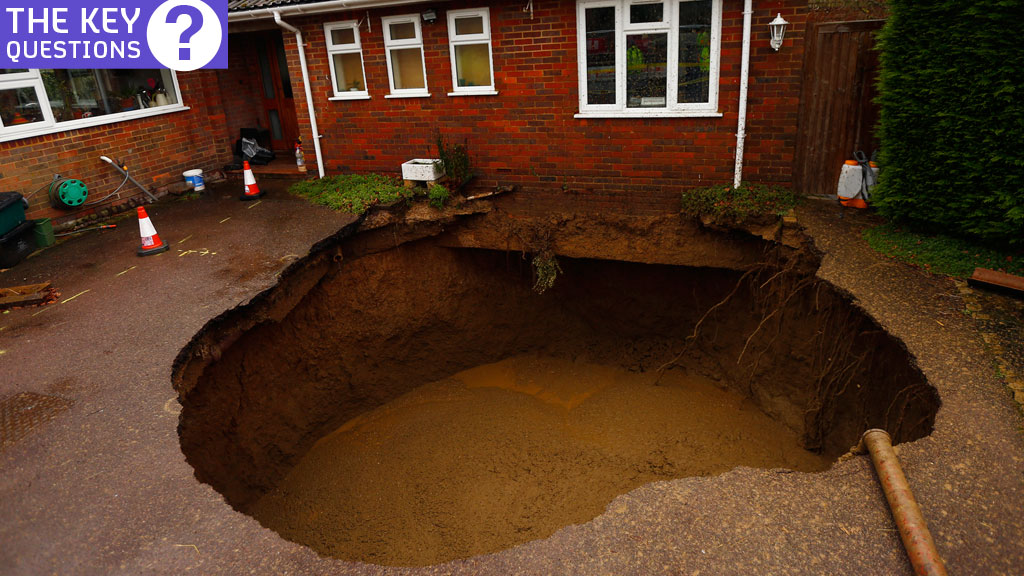
A 5ft wide hole that opened up beneath a 100-year-old detached house in Ripon, North Yorkshire is the latest in a spate of sinkholes in the UK.
It appeared on Monday, days after a 35ft wide and 20ft deep sinkhole opened up under homes in a quiet cul-de-sac in Hemel Hempstead, Hertfordshire.
Last week, a stretch of the M2 in north Kent was closed after a 15ft deep hole was discovered in the central reservation, and on 2 February a teenager’s car was swallowed up when a 30ft deep crater appeared in a family’s driveway in High Wycombe, Buckinghamshire.
So what’s going on? Sinkholes are frightening, dramatic and can be very sudden – not at all the British countryside’s normal behaviour. Perhaps predictably though, they can be linked back to something which is rather more traditionally British: rain. And we’ve had plenty of that in recent weeks, leading in some areas to very serious flooding.
What are sinkholes?
According to the US Geological Survey, sinkholes are common where the rock below the surface is limestone, carbonate rock, salt beds, or other kinds of rock which can naturally be dissolved by groundwater circulating through them.
As the rock dissolves, spaces and caverns develop underground. Sinkholes are dramatic because the land usually stays intact for a while until the underground spaces just get too big. If there is not enough support for the land above the underground caverns, then a sudden collapse of the land on the surface can occur – a sinkhole.
Sinkholes can be divided into two types. First, there are cover-collapse sinkholes, which can develop abruptly (over a period of hours) and cause catastrophic damage.
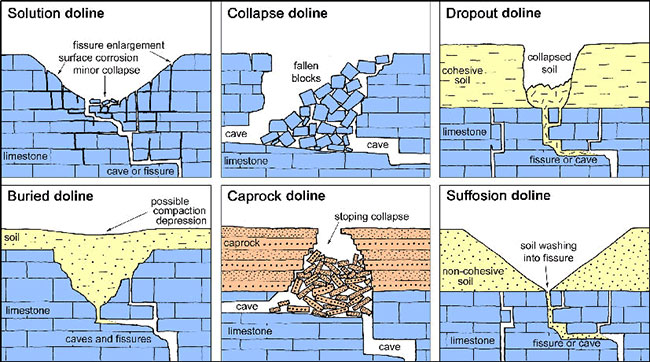
The formation of sinkholes, from the British Geological Survey
Secondly, there are cover-subsidence sinkholes, which form slowly over time with the ground gradually subsiding or deflating. These types of events can be less noticeable and go undetected for long periods.
Sinkhole collapses can range in size and severity. Sinkholes can vary from a few feet to hundreds of acres and from less than one foot to more than 100ft deep. They have all kinds of disastrous consequences, and have been seen to swallow up swimming pools, parts of roadways, and even buildings.
What triggers sinkholes?
A range of factors – natural and man-induced – can trigger sinkhole collapse, and heavy rain or surface flooding are considered to be examples of triggers.
Dr Vanessa Banks from the British Geological Survey, told Channel 4 News: “The ground is saturated at the moment, in certain parts of the country, and where it’s saturated, it will remain saturated for some weeks, if not months.
“Gradually the situation will improve, but in the short term I suspect there will be more of these incidents being reported.”
Most of the areas in the UK which can be susceptible to sinkholes are relatively small or are in upland rural locations. They have also been known to occur in areas including the Mendips, parts of Wales, and the northern Pennines including the Yorkshire Dales.
Old coalmine shafts in Yorkshire have been known as a cause of holes which could “theoretically” be the case in Kent but is it “more likely to be related” to the probable chalk or limestone make-up of the area along with the rainfall, Sarah Fray, director of Engineering and Technical Services at the Institution of Structural Engineers, told Channel 4 News.
She described the hole along the M2 as “unpredictable”.
She said: “Chalk and limestone is alkaline and rainwater is acidic – if you put acidic water on it, it dissolves over a period of time which can happen over a millenia.”
This can be a particular problem when the chalk is covered by clay and sand deposits.
“When you have a lot of rain, this can mobilise the soil,” said Ms Fray.
Channel 4 News has tracked down some of the world’s most spectacular sinkholes.
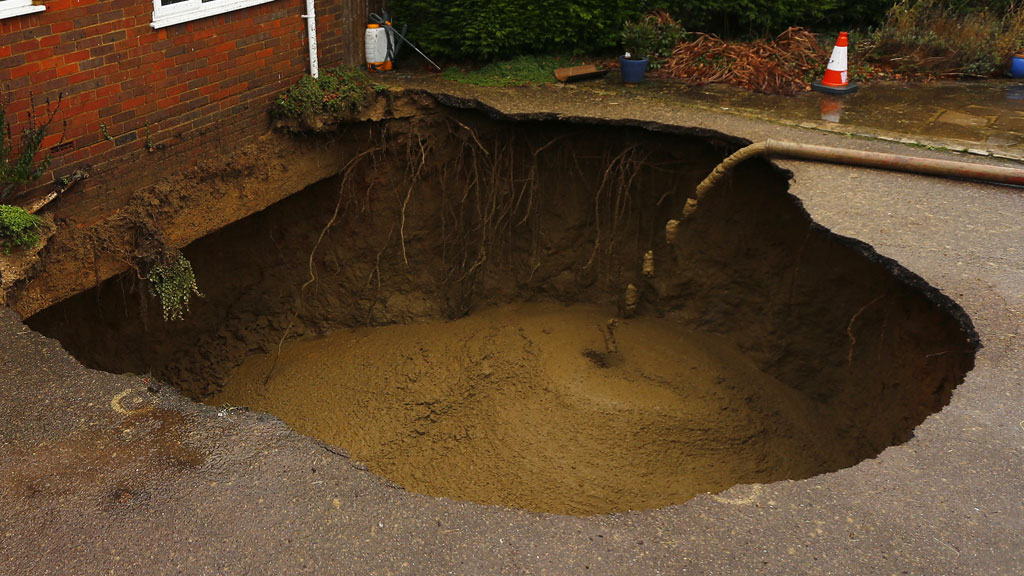
Concrete is poured into a 4.5m wide sinkhole on the driveway of a house in Walters Ash, southern England in February 2014. The hole swallowed a car which was not recovered and the 9m-deep crater is now being filled with 300 tonnes of concrete.
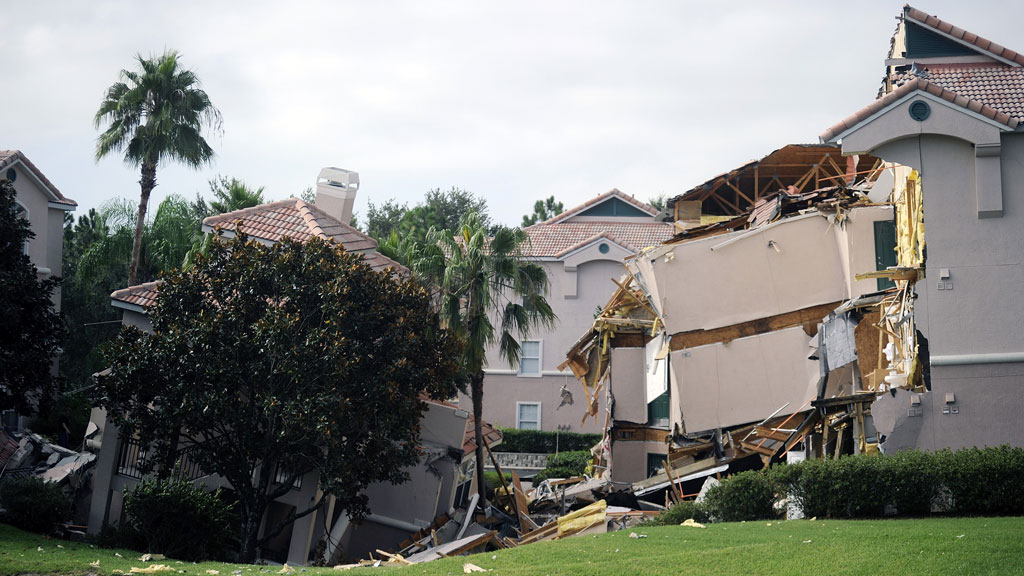
The study of sinkholes attracted considerable media attention in 2013 after the tragic death of a man at Seffner near Tampa, Florida. A sinkhole, that had formed beneath Jeff Bush’s house, “swallowed” him when the house floor collapsed.
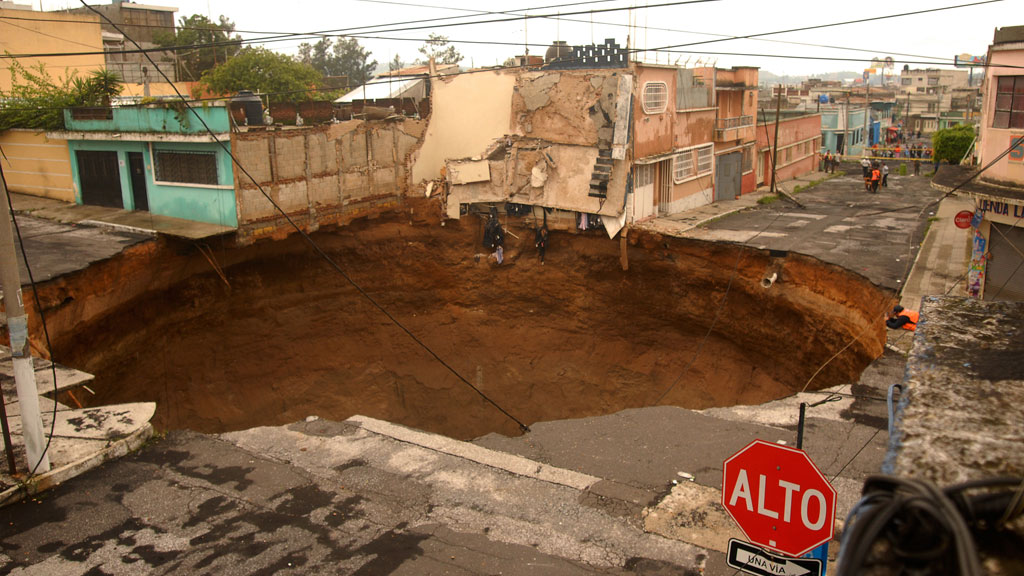
One of the most spectacular examples is the collapse that occurred in May 2010 in Guatemala City. Here, cavities developed in weak, unconsolidated volcanic deposits following a tropical storm. These then collapsed, creating a shaft approximately 100m deep and 20m wide.
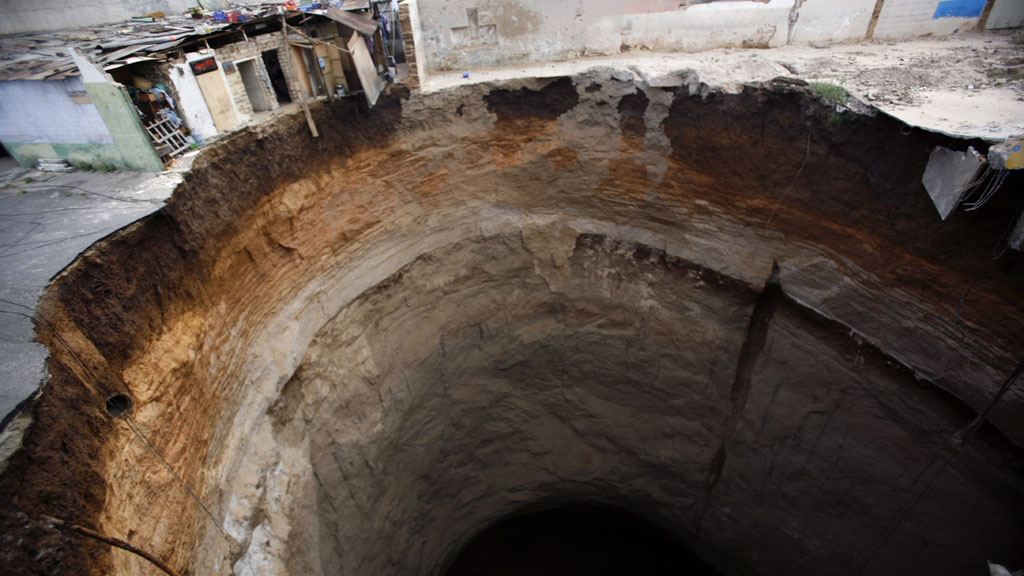
There was a previous sinkhole elsewhere in Guatemala City in 2007, which killed three people when several houses were swallowed up.
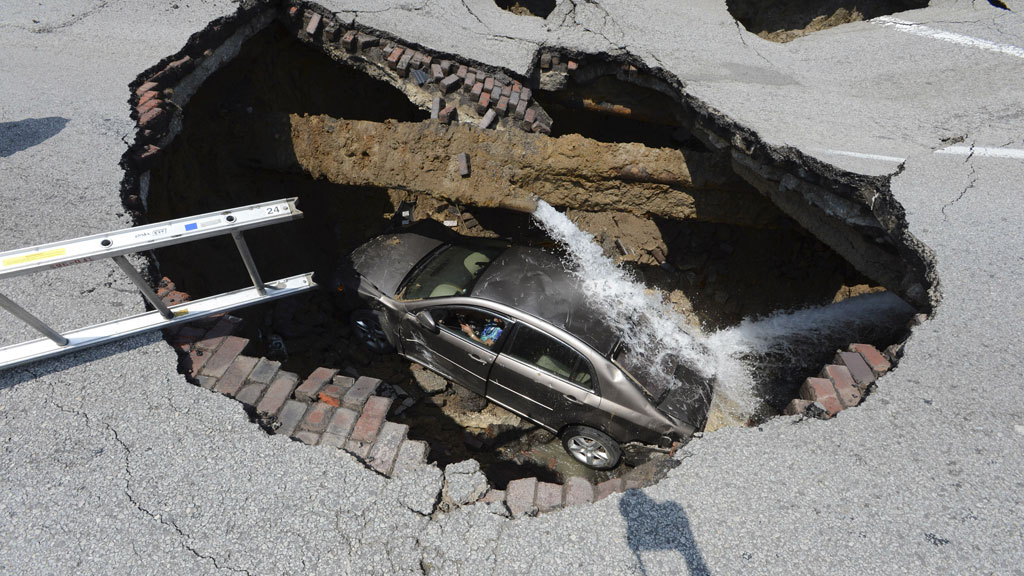
Pamela Knox waits to be rescued after a massive sinkhole opened up underneath her car in Toledo, Ohio in July 2013.
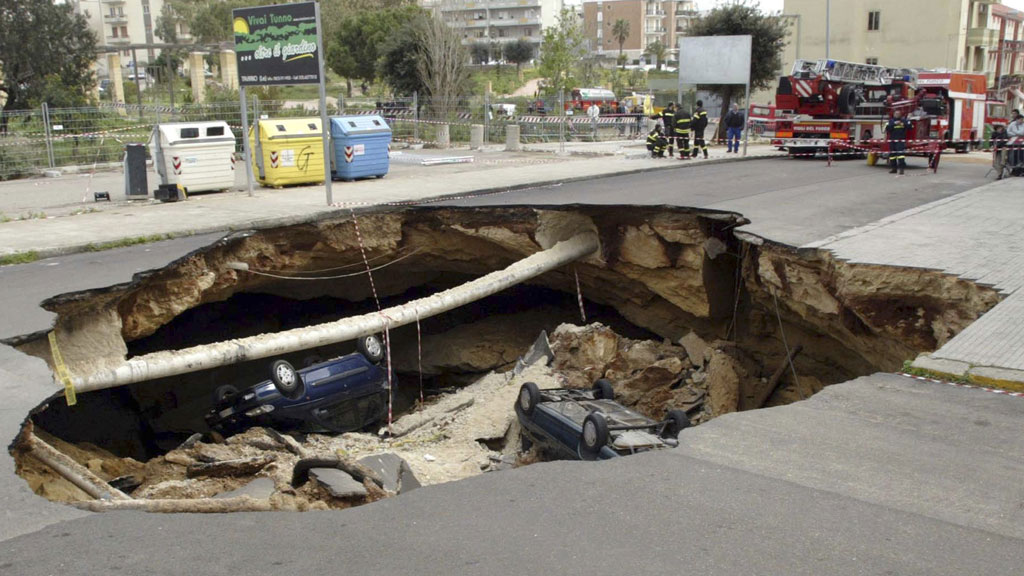
Cars lie in a sinkhole, caused when a road collapsed into an underground cave system, in the southern Italian town of Gallipoli in 2007.
-
Latest news
-
Yungblud launches his own affordable music festival5m

-
Why these Americans want to quit their state9m

-
Company behind infected water outbreak are ‘incompetent’ says local MP5m

-
Israeli forces push deeper into Northern and Southern Gaza4m

-
India’s ‘YouTube election’: Influencers enlisted to mobilise youth vote6m

-




